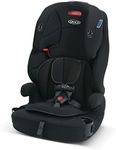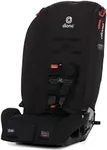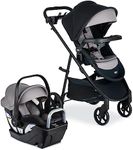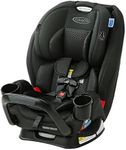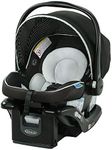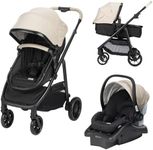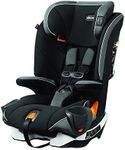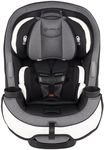Buying Guide for the Best Car Seats
Choosing the right car seat is crucial for your child's safety and comfort during travel. The best car seat for you will depend on your child's age, weight, height, and your vehicle's compatibility. It's important to understand the different types of car seats and the key features that ensure both safety and ease of use. Always check that the car seat meets current safety standards and fits properly in your car. Remember, the right car seat grows with your child and adapts to their changing needs.Type (Rear-Facing, Forward-Facing, Booster)The type of car seat refers to its design and the age or size group it is intended for. Rear-facing seats are for infants and young toddlers, offering the best protection for their developing neck and spine. Forward-facing seats are for older toddlers and preschoolers, while booster seats are for older children who have outgrown forward-facing seats but are not yet big enough for the car's seat belt alone. Choosing the right type depends on your child's age, weight, and height. Always follow the manufacturer's guidelines and local laws to determine when to transition to the next type.
Weight and Height LimitsEvery car seat has specific weight and height limits that indicate the range of child sizes it can safely accommodate. These limits are important because using a seat outside of its recommended range can compromise safety. When comparing seats, look for those that allow your child to stay rear-facing or harnessed for as long as possible, as this is generally safer. Make sure to check your child's current measurements and choose a seat that will fit them now and allow for some growth.
Installation Method (LATCH, Seat Belt)Car seats can be installed using either the vehicle's seat belt or the LATCH (Lower Anchors and Tethers for Children) system. LATCH is designed to make installation easier and reduce the risk of incorrect installation. However, not all vehicles or seating positions support LATCH, especially in older cars. It's important to check your vehicle manual and the car seat instructions to see which method is best for your situation. The right choice is the one that allows you to install the seat securely and correctly every time.
Ease of AdjustmentEase of adjustment refers to how simple it is to change the harness height, recline angle, or headrest position as your child grows. Some seats require rethreading the harness, while others have no-rethread systems that make adjustments much easier. If you want a seat that adapts quickly as your child grows or if multiple caregivers will be using the seat, look for models with easy-to-use adjustment features. This ensures your child is always properly secured without hassle.
Safety FeaturesSafety features include things like side-impact protection, energy-absorbing foam, and a five-point harness. These features are designed to provide extra protection in the event of a crash. While all car seats sold must meet minimum safety standards, some offer additional features for enhanced safety. Consider your peace of mind and the specific risks you want to address, such as side-impact collisions, when evaluating these features.
Size and Fit in Your VehicleThe size and shape of a car seat can affect how well it fits in your vehicle, especially if you have a smaller car or need to fit multiple seats across the back seat. Some seats are bulkier, while others are designed to be more compact. Before buying, measure your vehicle's back seat and check the car seat's dimensions. If possible, test the seat in your car to ensure a proper fit and that it doesn't interfere with other passengers or seats.
Ease of CleaningChildren can be messy, so the ease of cleaning is an important consideration. Some car seats have covers that are easy to remove and machine-washable, while others may require more effort to clean. If you anticipate frequent spills or accidents, look for a seat with simple, durable fabrics and removable covers. This will make maintenance much easier and keep the seat hygienic for your child.
